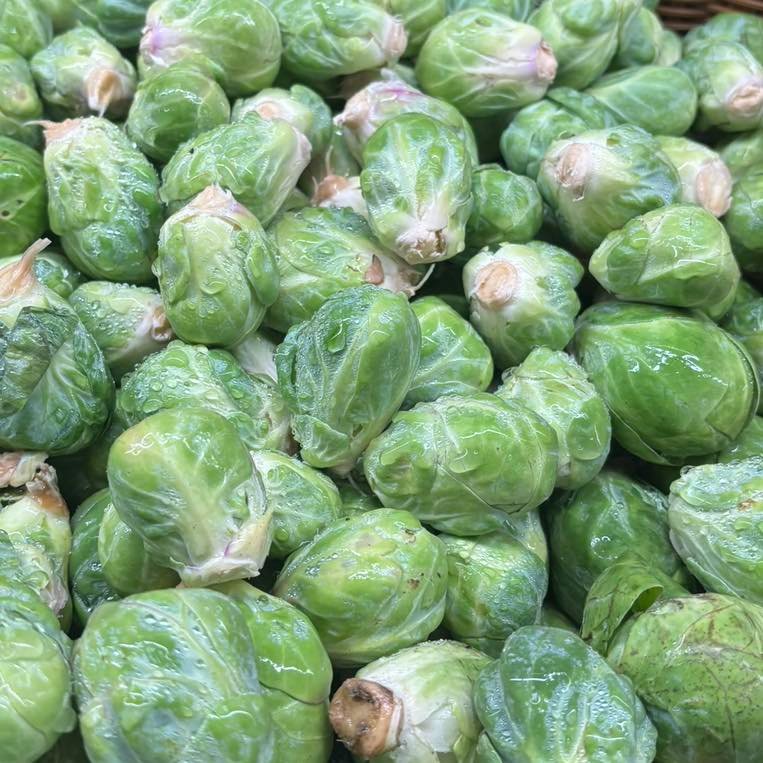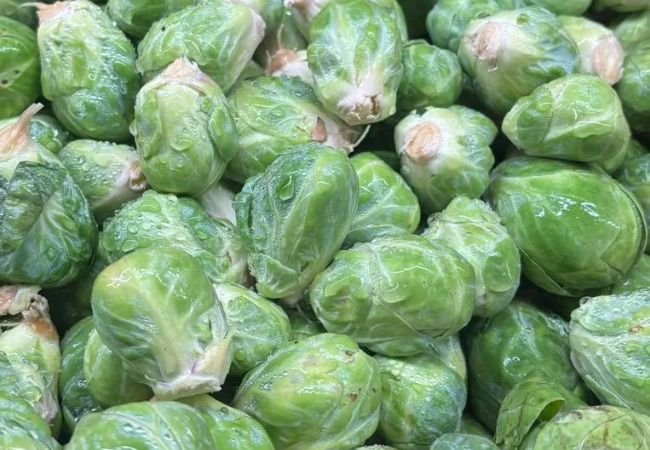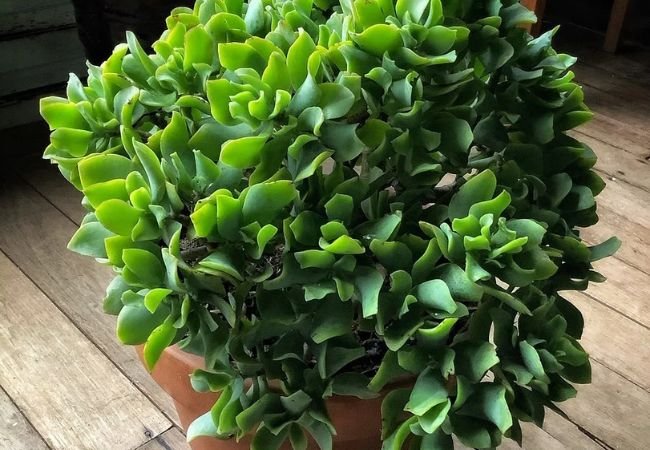Discover the simple steps to growing your own Brussels sprouts a versatile and nutritious vegetable. Learn how to select the best varieties, plant, care for and harvest a bountiful crop in your home garden.
Brussels sprouts are a delicious and nutritious vegetable that are surprisingly easy to grow in your home garden. While they may seem a bit intimidating, with the right information, anyone can enjoy a bountiful harvest of these mini cabbages.
In this article, we’ll cover all the basics of how to successfully grow Brussels sprouts, from choosing the right variety to harvesting your crop. Whether you’re a seasoned gardener or are new to growing your own produce, this guide will provide you with the knowledge you need to add Brussels sprouts to your homegrown repertoire.
Here’s an easy chart for Brussels Sprouts (Brassica oleracea var. gemmifera):
| Aspect | Information |
|---|---|
| Botanical Name | Brassica oleracea var. gemmifera |
| Common Name | Brussels Sprouts |
| Plant Type | Biennial, grown as an annual |
| Zones | 2-9 |
| Sun Exposure | Full sun |
| Soil Type | Well-draining, fertile soil |
| Bloom Time | Not applicable (grown for edible buds) |
| Harvest Time | Late fall to early winter |
| Height/Spread | 2-3 feet tall, 1-2 feet wide |
| Special Features | Cold-hardy, high in vitamins, slow-growing |
Choosing the Right Brussels Sprouts Variety

The first step in growing Brussels sprouts is selecting the right variety to plant. There are a number of different cultivars available, each with their own unique characteristics. When choosing a variety, consider factors like:
Maturity Time
Brussels sprouts come in early, mid, and late-season varieties. Early varieties mature in around 90 days, while late-season ones can take up to 120 days. Choose a maturity time that fits your growing season.
Size
Brussels sprouts come in different sizes, from compact 1-inch buttons to larger 2-3 inch sprouts. Decide if you want a smaller or larger variety based on your personal preferences and how you plan to use them.
Cold Hardiness
Some Brussels sprout cultivars are more tolerant of cold temperatures than others. If you live in a climate with harsh winters, opt for a cold-hardy variety.
Some popular and reliable Brussels sprout varieties include:
Jade Cross – An early maturing variety with 1-1.5 inch sprouts
Long Island Improved – A classic mid-season type with larger 2-3 inch sprouts
Catskill – A cold hardy late-season cultivar that can withstand frost
When purchasing seeds or seedlings, look for varieties that are labeled as suitable for your USDA hardiness zone. This will ensure they are well-adapted to grow in your local climate.
Planting Brussels Sprouts
Brussels sprouts are a cool weather crop that does best when planted in the spring or fall. The ideal soil temperature for planting is between 45-75°F. In most climates, the best time to plant is in the spring, about 6-8 weeks before the last expected frost date.
Start by selecting a sunny spot in your garden that gets at least 6 hours of direct sunlight per day. Brussels sprouts prefer rich, well-draining soil that is high in organic matter. Amend your garden bed with compost or aged manure before planting to enrich the soil.
You can plant Brussels sprouts from seed or from seedlings. If starting from seed, sow them indoors 6-8 weeks before your last spring frost date. Plant the seeds 1/2 inch deep and 2 inches apart. Keep the soil consistently moist and provide the seedlings with plenty of light. Transplant the seedlings outdoors once they are 4-6 inches tall and the weather is warm enough.
Alternatively, you can purchase Brussels sprout seedlings from a local nursery or garden center and plant those directly in your garden. Dig holes 12-18 inches apart and plant the seedlings at the same depth they were growing in their containers. Firm the soil gently around the roots.
No matter which method you choose, be sure to space your Brussels sprouts plants 12-18 inches apart in rows that are 2-3 feet apart. This gives them enough room to grow and produce a good crop.
Caring for Brussels Sprouts
Once your Brussels sprouts are planted, there are a few key things to focus on to ensure a healthy, bountiful harvest:
Water
\Keep the soil consistently moist, but not waterlogged. Brussels sprouts need about 1-2 inches of water per week, either from rainfall or irrigation. Water at the base of the plants to avoid getting the leaves wet.
Fertilizer
Brussels sprouts are heavy feeders and will benefit from a regular dose of fertilizer. Side-dress the plants with a balanced, slow-release vegetable fertilizer every 4-6 weeks during the growing season. You can also work some compost or aged manure into the soil around the plants.
Pruning
As the Brussels sprout plants grow, remove any lower leaves that start to yellow or die back. This helps direct the plant’s energy into producing the sprouts rather than foliage. You can also pinch off the growing tip of the main stem once the lower sprouts begin to form. This encourages the development of more sprouts.
Pest Control
Keep an eye out for common Brussels sprout pests like aphids, cabbage worms and cutworms. You can handpick any pests you see or use an organic pest control spray if the infestation gets bad. Row covers can also help prevent bugs from reaching your plants.
Weed Control
Make sure to keep your Brussels sprout patch well weeded. Weeds can compete with the plants for nutrients and water. Use a hoe or hand pull weeds regularly to maintain a clean growing area.
With proper care and attention, your Brussels sprout plants will grow tall and strong, producing an abundant harvest of delicious mini cabbages.
Harvesting Brussels Sprouts
The best time to harvest Brussels sprouts is when the sprouts are firm, bite-sized and a deep green color. This usually occurs 80-100 days after transplanting, depending on the variety.
Begin harvesting the lower sprouts first, as these will mature before the ones higher up on the stalk. Use a sharp knife or pruners to cut the sprouts off the stem, leaving a short stub attached. Avoid pulling the sprouts off, as this can damage the plant.
Continue harvesting the sprouts from the bottom up, cutting off new sprouts every 7-10 days. The plant will continue to produce new sprouts as the older ones are removed.
You can harvest the entire plant at once by cutting off the main stem just above the ground once the majority of the sprouts are ready. This will allow you to collect all the sprouts at one time.
After harvesting, store the Brussels sprouts in a plastic bag or airtight container in the refrigerator. They will keep for 3-5 days. You can also freeze the sprouts for longer term storage.
Tips for Delicious Brussels Sprouts
Here are some additional tips to help you grow the most delicious Brussels sprouts:
Mulch
Apply 2-3 inches of organic mulch like straw or wood chips around the base of the plants. This helps retain moisture and suppress weeds.
Varieties for Flavor
If flavor is your top priority, try growing sweeter varieties like Long Island Improved or Gustus. Avoid the more bitter-tasting types.
Roasting
Roasting Brussels sprouts brings out their natural sweetness. Toss the sprouts with olive oil, salt and pepper before roasting at 400°F for 20-25 minutes.
Companion Planting
Grow Brussels sprouts alongside other cool weather crops like kale, spinach and radishes. Avoid planting them near tomatoes.
Overwintering
In mild climates, you can overwinter Brussels sprout plants by mulching them heavily. The sprouts will continue to grow and you can harvest them through the winter.
With these tips, you’ll be well on your way to growing a bountiful crop of delicious, homegrown Brussels sprouts. Enjoy them roasted, sautéed, steamed or in your favorite recipes. Happy gardening!








Leave a Reply